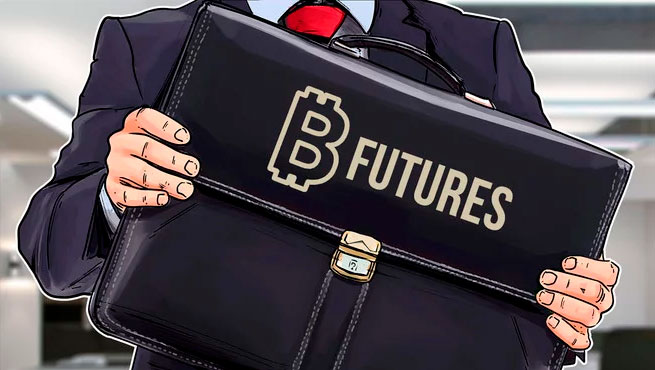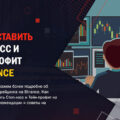
Whether you are a beginner or have years of experience in trading cryptocurrency futures, you shouldunderstand its key concepts in order to be able to apply them in practice. Each trader can use several mechanisms to effectively execute trades and minimize losses.
Traders who trade futures on the largest crypto exchange Binance have tools at their disposal:
- market orders,
- limit orders,
- stop orders.
Knowing how these three main types worktools will help any user understand the specifics of the various types of futures orders available on the Binance Futures platform https://binance.com.
What is a market order?
The first order type that anyone who trades futures should know about.market order... This order type should be used inappropriate situations. It allows traders to buy or sell an asset instantly and at the best available price. Such orders require liquidity and are executed based on previously placed limit orders.
Since market orders are executed immediately,the trader is charged a taker commission. On Binance, you have the ability to place both market orders at the market execution price as well as limit and stop limit orders.
A market buy order will be matched againstlimit orders at the lowest selling price in the order book until the order is fully filled. If a buy order is placed in excess of the lowest sell limit order, the remainder of the buy order will be executed on the next available sell limit order. This effect is known as slippage.
When to use market orders?
Market orders can be used to the benefit of the trader when the promptness of order execution becomes more important than buying / selling at a specific price.
For example, when the immediate execution of the ordercan help the trader achieve the desired goals, slippage can be ignored. A market order may also be required in the event of a non-execution of a stop limit order, when the trader will have to correct it by buying or selling at the market price immediately.
Such orders must be used inin exceptional cases, when higher commissions, slippage, or, in other words, avoidable losses, are negligible compared to the benefits of order execution.
Market order issues
As mentioned above, placement of marketorders come with some problems and should be avoided when you first start trading. Taker fees are applied to any market orders, resulting in increased costs and the trader being forced to pay much more than necessary.
In addition, when trading large volumesa market order may not be matched with limit orders to sell at the lowest market price, so slippage to a much higher price will follow, which could cause the trader to lose a significant portion of their funds.
What is a limit order?
Limit order– this is the type of order that is used whenthe need to place an order at a certain price. The transaction will only occur if the market price reaches the specified limit or best price. Thus, a buy order will be executed below the current market price, and a sell order will be executed above.
Since the market price may not reachthe set price of a limit order, trades are not executed immediately and may not be executed at all (if orders are placed at an unrealistic price). The commission for a limit order is not as high as for a market order and is charged as a maker's commission.
When to use limit orders?
Limit orders can be useful in severalsituations, in particular, under the assumption that the market will someday rise or fall. A group of large limit orders (buy / sell) can help traders identify potential support and resistance levels and determine the next market trend.
Understanding where these lines areresistance can benefit futures traders and help determine when and where to place a short or long order. Binance also offers traders the ability to place limit orders at a specific percentage of their balance.
Problems related to limit orders
Lack of volume can be a problem forlimit orders and lead to their non-execution. This occurs when a limit order is placed in the order book long after several other limit orders have been placed.
Limit orders are placed chronologically infirst order. If a sufficient number of limit orders were executed at a certain price, then if it changes, there may still be other limit orders in the order book that did not have time to be executed.
In addition, if the price of the limit order is neverwill be reached and, therefore, the order will not be executed, but will remain open, this could damage the trading strategy that you planned to implement. In order not to miss the window of opportunity with limit orders, traders can choose the third option, which allows setting price boundaries for opening a trade.
What is a stop order?
Stop order– this is an order that is triggered when the price movesabove the selected point. Stop orders are further divided into stop limit and stop market orders. These orders have two prices: a stop price and a limit/market price.Stop Priceactivates buy or sell orders whilelimit / market pricesets the minimum or maximum at which a trader is willing to buy or sell an asset, respectively.
The stop order is activated at the stop price or higher. When the stop price is reached, the order is placed in the book, waiting for the limit / market price to trigger.
For example, if a trader, protecting his funds,places a stop limit to sell 1 ETH at $ 1,600, he can set a stop price somewhere around $ 1,650. If and when the price of 1 ETH falls to $ 1,650, the limit order will appear in the order book, and if the price reaches $ 1,600, the order will be executed.
When to use stop orders?
Most likely usage premisestop orders are a desire to protect against large losses on a trade. The cryptocurrency market is extremely volatile. Therefore, when unexpected changes, fluctuations, market surrenders, etc. occur, it is extremely important for a futures trader to be prepared for such a scenario. And the best way to prepare is to place stop orders.
These orders not only protect traders fromfurther losses at the time of surrender. It can also help them track the price range of cryptocurrencies. Setting stop orders helps determine when to exit a trade and relieves the trader of stress. By setting a stop order at a price that is satisfactory to him, the trader can be sure that he will not lose funds beyond this limit.
Whatever trading method you choose, the main thing is to have a good understanding of each type and use it wisely to achieve your goal.
The official website of the Binance Futures cryptocurrency platform is https://binance.com.
Useful materials and guides
Especially for beginners, we have prepared detailed guides on the topic of cryptocurrency trading:
- How to buy Bitcoin on a crypto exchange for rubles?
- What are bitcoin futures and where can you trade them?
- Cryptocurrency margin trading on the Binance exchange.
- How do I start trading futures contracts on Binance Futures?

5
/
5
(
1
voice
)





